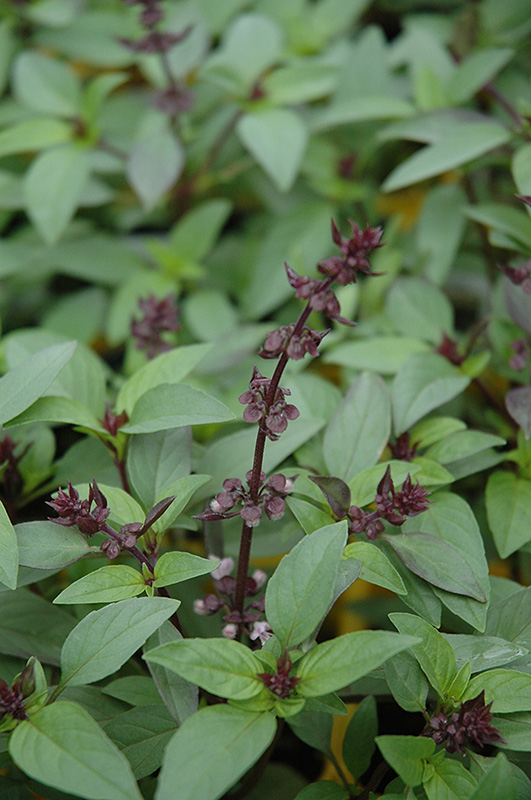Plant Finder
Height: 16 inches
Spacing: 10 inches
Sunlight:
![]()
Hardiness Zone: (annual)
Edible Qualities
Thai Basil is an annual herb that is commonly grown for its edible qualities. The fragrant pointy dark green leaves are usually harvested from late spring to late summer. The leaves have a spicy taste.
The leaves are most often used in the following ways:
- Fresh Eating
- Cooking
- Seasoning
Planting & Growing
Thai Basil will grow to be about 16 inches tall at maturity, with a spread of 12 inches. When grown in masses or used as a bedding plant, individual plants should be spaced approximately 10 inches apart. This fast-growing annual will normally live for one full growing season, needing replacement the following year.
This plant is typically grown in a designated herb garden. It should only be grown in full sunlight. It prefers to grow in average to moist conditions, and shouldn't be allowed to dry out. It is not particular as to soil type or pH. It is somewhat tolerant of urban pollution. This is a selected variety of a species not originally from North America. It can be propagated by cuttings; however, as a cultivated variety, be aware that it may be subject to certain restrictions or prohibitions on propagation.
Thai Basil is a good choice for the edible garden, but it is also well-suited for use in outdoor pots and containers. It is often used as a 'filler' in the 'spiller-thriller-filler' container combination, providing the canvas against which the larger thriller plants stand out. Note that when growing plants in outdoor containers and baskets, they may require more frequent waterings than they would in the yard or garden.
Disclaimer - This Plant Finder tool is an online resource representing many of the varieties that we carry over the course of the season, and is intended for informational purposes only. Inventory varies seasonally, so we cannot guarantee that every plant will be in stock at all times - please contact us directly for current availability. The Plant Finder tool does not include our entire selection of plants, so be sure to visit us to see varieties that may not be represented on this list.

